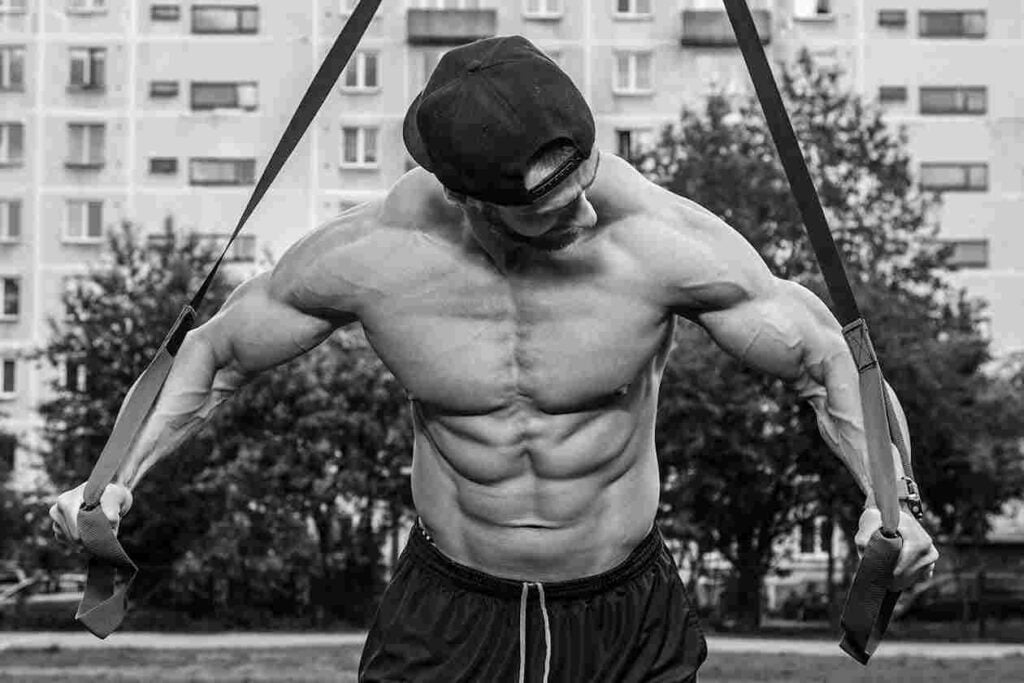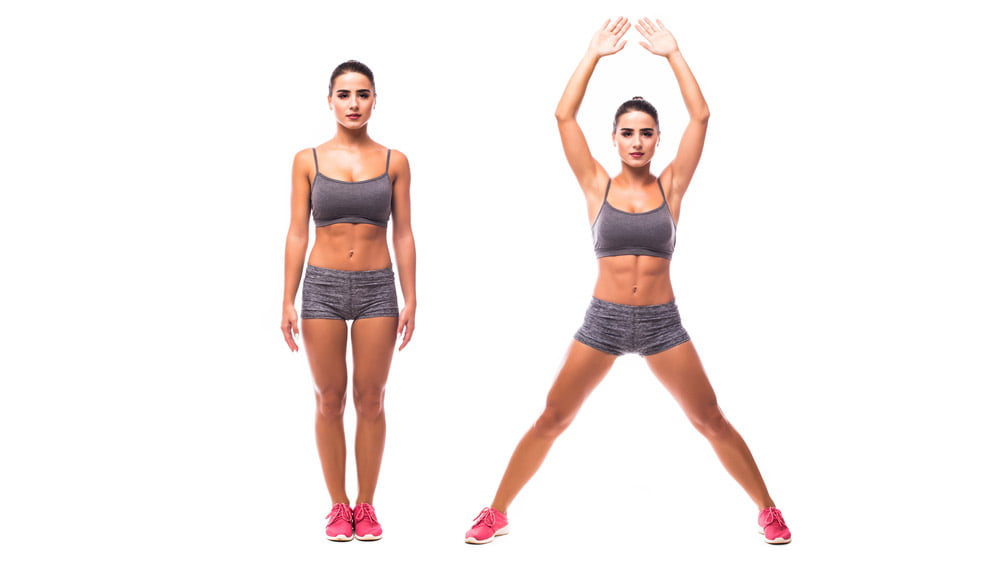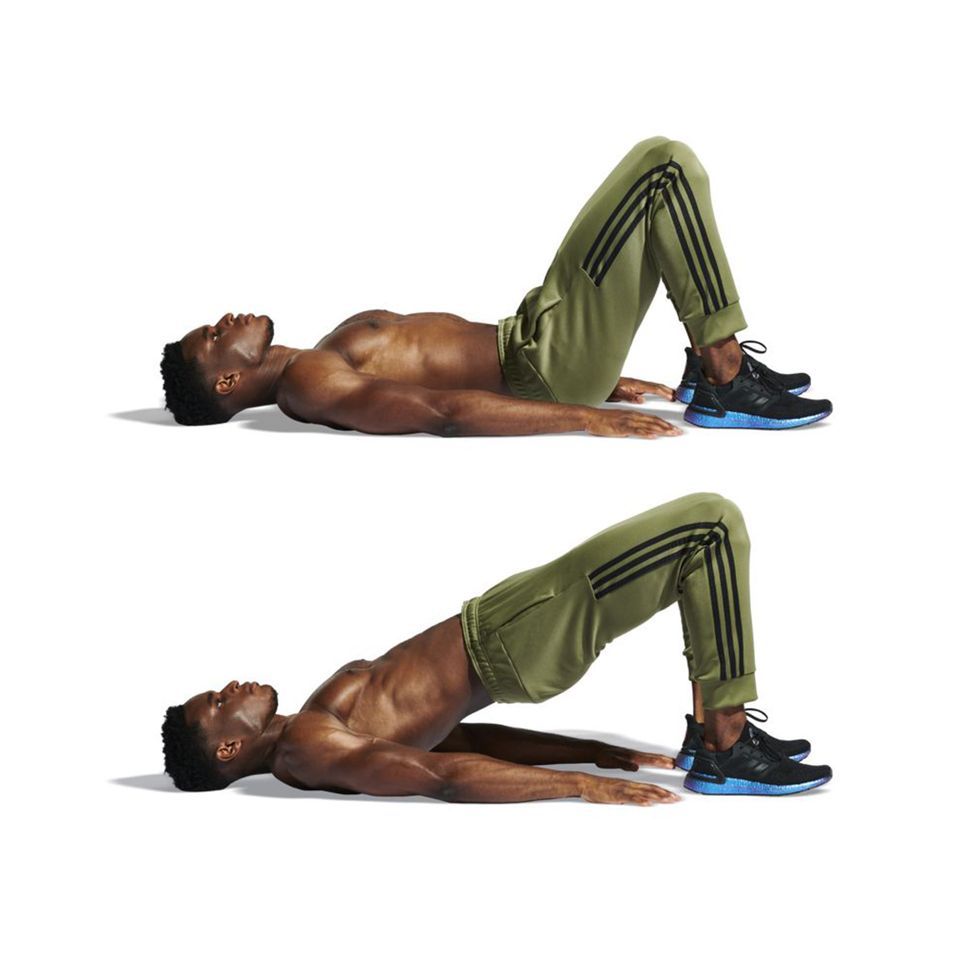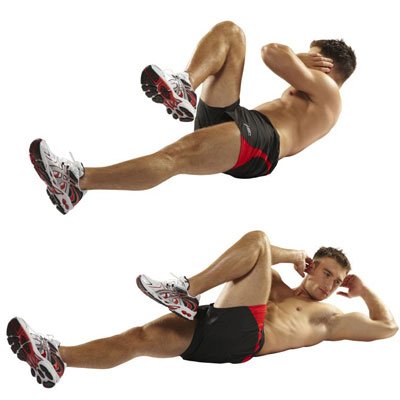Introduction
Welcome to the world of calisthenics! Whether you’re a fitness enthusiast or a beginner looking to kickstart your fitness journey, calisthenics is an excellent choice. This complete guide will provide you with all the necessary information, tips, and a comprehensive calisthenics workout plan for beginners. Get ready to sculpt your body, improve your strength, and unleash your full potential!
Understanding Calisthenics: Where to Start?
When embarking on your calisthenics journey, it’s crucial to start with a solid foundation. Here are some key points to consider as you begin your calisthenics workout for beginners:

- Set Clear Goals: Before you start any fitness program, it’s essential to establish your goals. Determine what you want to achieve through calisthenics, whether it’s building strength, improving flexibility, losing weight, or a combination of these. Having specific goals will help guide your training and keep you motivated.
- Learn the Basics: Calisthenics exercises often involve complex movements that require proper form and technique. It’s essential to learn the fundamental exercises and practice them correctly before progressing to more advanced variations. Push-ups, squats, lunges, planks, and pull-ups are excellent exercises to start with.
- Master Body Control: Calisthenics emphasizes bodyweight movements, which require excellent body control and stability. Focus on developing a strong mind-muscle connection and learning to engage the target muscles effectively. This control will not only improve your performance but also reduce the risk of injury.
- Gradual Progression: As a beginner, it’s crucial to start with exercises that match your current fitness level. Avoid jumping into advanced movements right away, as it can lead to frustration or injury. Begin with modified versions of exercises and gradually increase the difficulty level as you gain strength and confidence.
- Patience and Consistency: Rome wasn’t built in a day, and neither will your calisthenics prowess. Consistency is key when it comes to achieving progress. Commit to regular workouts and be patient with yourself as you gradually improve. Remember, every small step forward is a step closer to your goals.
- Listen to Your Body: Pay attention to how your body feels during and after each workout. It’s normal to experience muscle soreness, but sharp pain or discomfort may indicate improper form or overexertion. Take rest days when needed and don’t hesitate to seek guidance from a fitness professional if necessary.
- Stay Hydrated and Fuel Properly: Proper hydration and nutrition are vital components of any workout routine. Drink plenty of water throughout the day and fuel your body with nutritious foods that support your fitness goals. Adequate protein intake is especially important for muscle recovery and growth.
- Enjoy the Process: Calisthenics is not just about physical transformation; it’s a journey that can be enjoyable and fulfilling. Embrace the challenges, celebrate your achievements, and find joy in the progress you make along the way. Remember to have fun and appreciate the amazing things your body can do.
SHOP FOR THE BEST ADJUSTABLE DUMBBELL SET ON AMAZON
By starting your calisthenics journey with a solid foundation and following these tips, you’ll lay the groundwork for a successful and rewarding fitness experience. Get ready to unlock your potential, transform your body, and discover the amazing world of calisthenics!
Can Calisthenics Build Muscle?
Yes, calisthenics can indeed build muscle. While it may not provide the same level of muscle hypertrophy as traditional weightlifting, calisthenics can still help you develop lean muscle mass and increase strength. The key to building muscle with calisthenics lies in progressive overload and proper technique.
Progressive overload involves gradually increasing the difficulty of your workouts over time. This can be achieved by adding more repetitions, sets, or variations of exercises as you become stronger. For example, if you can easily perform ten push-ups, you can challenge yourself by progressing to decline push-ups or adding a weighted vest. This constant progression stimulates your muscles to adapt and grow.
Additionally, calisthenics exercises engage multiple muscle groups simultaneously, leading to functional strength gains and improved muscle coordination. Exercises such as pull-ups, dips, squats, and handstand push-ups target large muscle groups like the back, chest, legs, and shoulders. By performing these compound movements with proper form and intensity, you can effectively stimulate muscle growth.
SHOP FOR THE BEST QUALITY RESISTANCE BAND ON AMAZON
Moreover, calisthenics emphasizes body control and stability, which helps develop smaller stabilizer muscles that are often neglected in traditional weightlifting exercises. These stabilizer muscles play a crucial role in maintaining balance and preventing injuries.
To optimize muscle growth with calisthenics, it’s important to focus on the principles of progressive overload, proper nutrition, and sufficient rest and recovery. Adequate protein intake, balanced macronutrients, and restful sleep contribute to muscle repair and growth.
Remember, building muscle takes time and consistency. As a beginner, it’s essential to start with a well-rounded calisthenics workout plan and gradually increase the intensity and complexity of your exercises as your strength improves. Stay dedicated, be patient, and enjoy the journey of sculpting your body through calisthenics!
Calisthenics Workout Plan for Beginners
To help you get started on your calisthenics journey, here is a well-rounded workout plan specifically designed for beginners:
1. Warm-up Routine

Before diving into the main workout, it’s crucial to prepare your body with a proper warm-up routine. This will help increase blood flow, loosen up your muscles, and prevent injuries. Here’s a simple yet effective warm-up routine to get you started:
SHOP FOR THE PULL-UP BAR ON AMAZON
- Jumping Jacks: Start by doing 2 sets of 15 jumping jacks to elevate your heart rate and warm up your entire body.
- Arm Circles: Stand with your feet shoulder-width apart and extend your arms out to the sides. Make small circles with your arms, gradually increasing the size. Do 2 sets of 10 circles in each direction.
- Leg Swings: Stand near a wall or support, and swing one leg forward and backward in a controlled manner. Do 10 swings for each leg.
- Hip Circles: Stand with your feet hip-width apart and place your hands on your hips. Rotate your hips in a circular motion, 5 circles clockwise and 5 circles counterclockwise.
- Plank: Finish your warm-up with a 30-second plank to engage your core muscles and activate your stabilizers.
Upper Body Calisthenics Workout

Now that you’re warmed up, let’s focus on strengthening your upper body with the following calisthenics exercises:
- Push-ups: Start with 3 sets of 10 push-ups. If this is too challenging, you can modify them by doing knee push-ups or performing them against a wall. Gradually increase the intensity as you progress.
- Dips: Find parallel bars or sturdy furniture at an appropriate height. Lower your body by bending your arms until your elbows are at a 90-degree angle, then push yourself back up. Aim for 3 sets of 8-10 repetitions.
- Pull-ups or Inverted Rows: If you have access to a pull-up bar, perform 3 sets of 5-8 pull-ups. If not, you can substitute them with inverted rows using a sturdy table or TRX straps. Adjust the difficulty by changing the angle of your body.
- Pike Push-ups: Assume a push-up position with your hips lifted and legs straight, forming an inverted V shape. Lower your head towards the ground and push back up. Start with 3 sets of 8-10 repetitions.
- Shoulder Taps: Get into a push-up position and lift one hand to touch the opposite shoulder. Alternate sides, aiming for 3 sets of 10 taps per side.
3. Lower Body Calisthenics Workout

To work on your lower body strength and develop well-rounded athleticism, incorporate the following calisthenics exercises:
- Squats: Begin with bodyweight squats, keeping your feet shoulder-width apart. Aim for 3 sets of 10-12 squats, focusing on proper form and gradually increasing the depth as you progress.
- Lunges: Step forward with one foot and lower your body until both knees are at a 90-degree angle. Push back up and repeat with the opposite leg. Perform 3 sets of 10-12 lunges per leg.
- Glute Bridges: Lie on your back with your knees bent and feet flat on the ground. Lift your hips off the ground, squeezing your glutes at the top, and lower back down. Start with 3 sets of 12-15 repetitions.
- Calf Raises: Stand on the edge of a step or platform with your heels hanging off. Rise up onto your toes, hold for a moment, and lower back down. Perform 3 sets of 12-15 calf raises.
4. Core Calisthenics Workout

Strong core muscles are essential for stability and proper form in all exercises. Include the following core exercises in your routine:
- Plank: Assume a push-up position, but instead of bending your arms, rest on your forearms. Hold this position for 30-60 seconds, focusing on keeping your body straight and engaging your core muscles.
- Bicycle Crunches: Lie on your back with your knees bent and hands behind your head. Alternate bringing your elbow towards the opposite knee, while extending the other leg. Aim for 3 sets of 12-15 reps per side.
- Russian Twists: Sit on the ground with your knees bent and feet elevated. Lean back slightly and twist your torso from side to side, touching the ground with your hands. Perform 3 sets of 12-15 twists per side.
- Hollow Body Hold: Lie on your back with your arms extended overhead and legs straight out. Lift your legs and upper body off the ground, engaging your core. Hold this position for 20-30 seconds and repeat for 3 sets.
Remember to rest for 1-2 minutes between sets and listen to your body. If any exercise feels too challenging or causes pain, modify it or seek guidance from a qualified fitness professional.
Targeted Calisthenics Workouts for Specific Muscle Groups
Calisthenics workouts provide a fantastic opportunity to target specific muscle groups and achieve a well-rounded physique. In this section, we will explore targeted exercises for key muscle groups, including the chest, legs, shoulders, biceps, and abs.
1. Calisthenics workout for chest
To target your chest muscles with calisthenics, there are several effective exercises you can incorporate into your workout routine. Here are a few examples:
SHOP FOR THE YOGA MAT ON AMAZON
a) Push-Ups: Begin with regular push-ups, keeping your hands slightly wider than shoulder-width apart. Lower your chest towards the ground, then push back up to the starting position. As you progress, you can try variations like wide-grip push-ups, diamond push-ups, or decline push-ups to intensify the challenge.
b) Dips: Find parallel bars or sturdy elevated surfaces and grip them with your palms facing down. Lower your body by bending your elbows and keeping them close to your sides, then push back up. Dips primarily target your chest, triceps, and shoulders.
c) Chest Dips: Similar to regular dips, but lean your body forward while performing the exercise. This shift in position emphasizes your chest muscles even more.
2. Legs calisthenics workout
Calisthenics offers various exercises to build strong and powerful legs. Incorporate the following movements into your routine:
a) Squats: Begin with bodyweight squats, standing with your feet shoulder-width apart. Bend your knees and lower your hips as if you’re sitting back into an imaginary chair. Keep your back straight, chest up, and heels grounded. Push through your heels to return to the starting position.
b) Lunges: Take a step forward with one foot and lower your body until both knees are bent at a 90-degree angle. Push back up to the starting position and repeat on the other leg. Lunges target your quadriceps, hamstrings, and glutes.
c) Bulgarian Split Squats: Stand with one foot elevated behind you on a bench or platform. Lower your body by bending your front knee until your thigh is parallel to the ground. Push through your front heel to return to the starting position. This exercise focuses on your quadriceps and glutes.
3. Shoulder calisthenics workout
To build strong and well-rounded shoulders using calisthenics, try the following exercises:
a) Handstand Push-Ups: Begin with your hands on the ground and kick your legs up against a wall, assuming a handstand position. Lower your body towards the ground by bending your elbows, then push back up to the starting position. This exercise targets your shoulders, triceps, and upper back.
b) Pike Push-Ups: Assume a push-up position, but position your hips high in the air so that your body forms an inverted “V” shape. Lower your head towards the ground by bending your elbows, then push back up. Pike push-ups engage your shoulders, triceps, and upper chest.
c) Shoulder Press: Stand with your feet shoulder-width apart and hold a barbell or dumbbells at shoulder level, palms facing forward. Press the weight overhead until your arms are fully extended, then lower back down to shoulder level. This exercise primarily targets your shoulders.
4. Calisthenics workout for biceps
To develop well-defined biceps with calisthenics, incorporate the following exercises:
a) Chin-Ups: Grip a pull-up bar with your palms facing towards you, hands slightly wider than shoulder-width apart. Pull your body up until your chin is above the bar, then lower back down. Chin-ups engage your biceps, back, and shoulders.
b) Inverted Rows: Lie on your back underneath a sturdy horizontal bar or suspension trainer. Grab the bar with an overhand grip, hands slightly wider than shoulder-width apart. Keep your body straight and pull your chest towards the bar, then lower back down. Inverted rows target your biceps, back, and shoulders.
c) Bicep Push-Ups: To begin, assume the starting position by getting into a high plank position. Place your hands slightly wider than shoulder-width apart, ensuring that your fingers are pointing towards your feet. This hand placement creates a supinated grip, with your palms facing up.
5. Calisthenics workout for abs
Calisthenics can help you develop a strong core and achieve impressive abs. Incorporate the following exercises into your routine:
SHOP FOR THE PUSH-UP BAR ON AMAZON
a) Planks: Begin in a push-up position, but with your elbows resting on the ground and forearms parallel to each other. Maintain a straight line from your head to your feet, engaging your core muscles. Hold this position for a designated time, gradually increasing the duration as you progress.
b) Leg Raises: Lie flat on your back with your arms by your sides. Lift your legs off the ground while keeping them straight, raising them until they are perpendicular to the floor. Slowly lower your legs back down without touching the ground and repeat.
c) Russian Twists: Sit on the ground with your knees bent and feet lifted slightly off the floor. Lean back slightly while maintaining a straight back and engaged core. Twist your torso from side to side, touching the ground on either side of your body with your hands.
By incorporating these targeted exercises into your calisthenics routine, you’ll be on your way to developing a well-rounded, strong, and sculpted physique.
Advanced Calisthenics Techniques
Once you’ve mastered the basics of calisthenics and developed a solid foundation of strength, it’s time to challenge yourself with advanced techniques. These techniques will push your limits, increase your strength gains, and take your calisthenics workouts to the next level. Here are some advanced calisthenics techniques to incorporate into your routine:
- Plyometrics: Plyometric exercises involve explosive movements that develop power and explosive strength. Incorporate exercises like plyometric push-ups, box jumps, and clap pull-ups into your routine. Start with lower intensity variations and gradually progress as your strength and explosiveness improve.
- Muscle-Ups: The muscle-up is a compound exercise that combines a pull-up and a dip. It targets your back, shoulders, chest, and arms. Start by mastering the pull-up and dip individually before attempting the muscle-up. Practice the transition between the two movements until you can smoothly execute a full muscle-up.
- Handstands: Handstands are a great way to build upper body strength, balance, and body control. Begin by practicing against a wall for support and gradually work towards freestanding handstands. Focus on proper hand placement, core engagement, and maintaining a straight body line.
- One-Arm Push-Ups: One-arm push-ups are a challenging exercise that targets your chest, triceps, and core. Start by using an elevated surface, like a bench or step, to decrease the amount of weight shifted to one arm. As you progress, gradually lower the surface until you can perform full one-arm push-ups on the ground.
- Pistol Squats: Pistol squats are a single-leg squat variation that targets your quadriceps, hamstrings, and glutes. Begin by practicing with a support, like a door frame or a TRX suspension trainer, to assist with balance. Slowly increase the range of motion and decrease the support until you can perform pistol squats without assistance.
- Front Lever: The front lever is an advanced static hold exercise that targets your back, core, and shoulders. Start by strengthening your back and core with exercises like pull-ups and hanging leg raises. Gradually progress to tuck front levers, straddle front levers, and eventually the full front lever.
Remember, advanced techniques require patience, practice, and proper form. Always prioritize safety and listen to your body. It’s essential to progress gradually and not rush into advanced movements before you’re ready. Working with a qualified coach or trainer can provide guidance and help you progress safely.
Can You Do Calisthenics Every Day?
Certainly! Calisthenics is a versatile form of exercise that can be performed daily, but it’s important to consider a few factors before committing to a daily routine. Here’s a brief explanation:
- Listen to Your Body: Pay attention to how your body feels after each calisthenics workout. If you experience excessive muscle soreness or fatigue, it may be a sign that you need to incorporate rest days into your routine. Rest and recovery are essential for muscle growth and injury prevention.
- Progressive Overload: To see continuous progress and avoid plateauing, it’s crucial to challenge your muscles progressively. This involves increasing the intensity, duration, or difficulty of your exercises over time. However, this also means that your muscles need time to recover and adapt to the increased demands.
- Balanced Training: Calisthenics engages multiple muscle groups simultaneously, which can put strain on your joints and connective tissues. To prevent overuse injuries, it’s important to ensure balanced training by targeting different muscle groups on different days. For example, you could focus on upper body exercises one day and lower body exercises the next.
- Active Rest Days: On days when you’re not performing intense calisthenics workouts, consider incorporating active rest days. Engaging in low-impact activities like walking, yoga, or stretching can help promote blood flow, alleviate muscle soreness, and improve overall mobility.
- Individual Factors: Everyone’s body is unique, and factors such as fitness level, age, and overall health can influence how frequently you can do calisthenics. It’s crucial to listen to your body, adjust the frequency as needed, and consult with a fitness professional or healthcare provider if you have any concerns or specific conditions.
In conclusion, while it’s possible to do calisthenics every day, it’s important to prioritize rest and recovery, incorporate progressive overload, maintain a balanced training approach, and consider individual factors. By finding the right balance, you can maximize the benefits of calisthenics while minimizing the risk of overtraining or injuries.
FAQs
Q.1 How long should a calisthenics workout for beginners be?
Ans. The duration of a calisthenics workout for beginners can vary depending on individual fitness levels and goals. As a general guideline, aim for a workout duration of 30 to 45 minutes. This timeframe allows for an effective workout while avoiding excessive strain on your muscles and joints. Remember to include a warm-up and cool-down period to prepare your body for exercise and promote recovery.
Q.2 Is it possible to build significant muscle with calisthenics alone?
Ans. Yes, it is absolutely possible to build significant muscle with calisthenics alone. Calisthenics exercises utilize your body weight as resistance, and by progressively increasing the difficulty and intensity of your workouts, you can stimulate muscle growth and strength development. It is important to focus on compound movements, such as push-ups, pull-ups, squats, and dips, as they engage multiple muscle groups simultaneously and provide a more comprehensive workout.
Q.3 Do I need equipment for a calisthenics workout?
Ans. One of the advantages of calisthenics is that it can be done with little to no equipment. While some exercises may require basic equipment like pull-up bars or parallel bars, many effective calisthenics workouts can be performed using your body weight alone. This makes calisthenics a convenient option that can be done anywhere, whether you’re at home, in a park, or traveling.
Q.4 How often should I progress to more advanced calisthenics exercises?
Ans. Progressing to more advanced calisthenics exercises should be done gradually and based on your individual capabilities. It’s important to master the fundamental movements and build a solid foundation of strength and stability before moving on to more challenging exercises. Aim to progressively increase the difficulty of your workouts every 4 to 6 weeks by introducing new exercises, increasing repetitions, or reducing rest time. Listen to your body and only progress when you feel comfortable and confident with your current exercises.
Q.5 Can calisthenics help with weight loss?
Ans. Yes, calisthenics can be an effective tool for weight loss when combined with a balanced diet and consistent exercise routine. Calisthenics workouts typically involve high-intensity movements that elevate your heart rate, promoting calorie burn and fat loss. Additionally, building lean muscle through calisthenics exercises can increase your metabolism, allowing you to burn more calories throughout the day. Remember that sustainable weight loss requires a combination of regular exercise, a nutritious diet, and a healthy lifestyle overall.
Conclusion
Congratulations! You have now gained a comprehensive understanding of calisthenics workouts for beginners. This guide has provided you with valuable information, tips, and a detailed workout plan to kickstart your fitness journey. By following the suggested exercises and incorporating progressive overload, you can build strength, improve muscle tone, and achieve your fitness goals.
Calisthenics offers numerous benefits, including convenience, versatility, and the ability to be performed without the need for specialized equipment. It is a fantastic way to engage your entire body, improve functional strength, and increase flexibility. Whether you are a beginner or an advanced fitness enthusiast, calisthenics can challenge and push you to new heights.
Remember, when starting a calisthenics workout routine, it is crucial to listen to your body, prioritize rest and recovery, and gradually progress to more advanced exercises. Always warm up before each workout and cool down afterward to prevent injuries and promote proper muscle recovery.
Additionally, don’t forget to maintain a balanced diet and overall healthy lifestyle to complement your calisthenics efforts. Proper nutrition and adequate hydration play vital roles in achieving optimal results.

Good day, and welcome to Fitthour. My name is Shubham Vijay, and I am a certified personal trainer and nutrition coach with 6 years of experience in the fitness industry. At Fitthour, we specialize in types of training, such as strength training, cardio, or HIIT, and our mission is to help clients achieve their fitness goals and improve their overall health.

